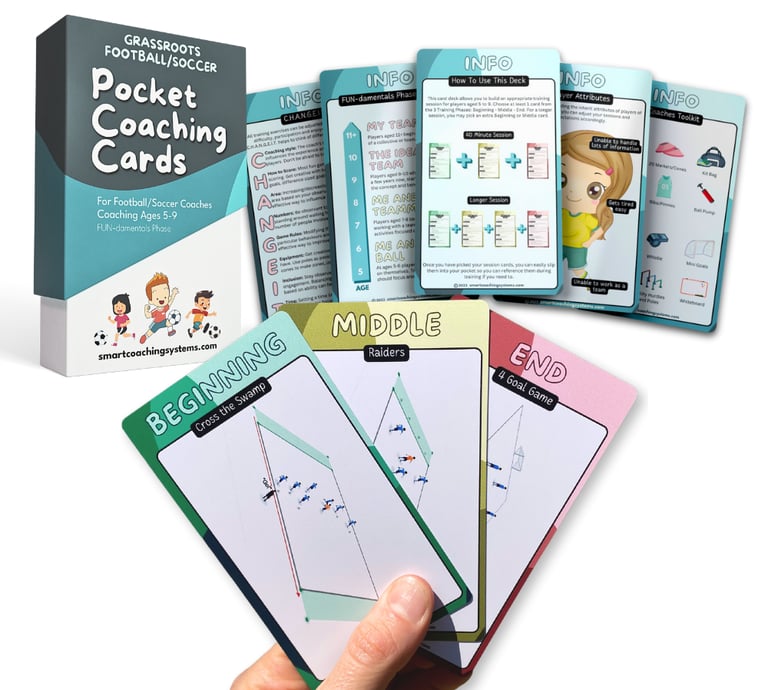The One-Ball Rule: Fostering Team Unity Before the Whistle Blows
Innovative "one-ball rule" at football/soccer training fosters unity and independence, transforming pre-training into a cohesive, team-building exercise.
CLUB AND TEAM CULTURECOACHING INSIGHTS
Ben Foulis
4/26/20242 min read
Join the Coaching Circle
Join our free email group, the Coaching Circle, and never miss out on valuable coaching tips and resources. Stay updated with the latest posts, news, and exclusive offers available only to Coaching Circle members.


I’ve really been trying to think of ways to make my team be more like a team. Traditionally, arriving early at the training field allowed me the time needed to set up equipment for the session, a period during which players would trickle in and, more often than not, divide into their usual cliques. This segmentation into groups, while not detrimental, didn’t foster the sense of unity I envisioned for the team. They engaged in aimless ball kicking with friends, missing out on a valuable opportunity to connect as a cohesive unit.
In an effort to address this, I introduced a small but impactful change to our pre-training routine: the one-ball rule. Before the official start of training, only one ball was permitted for use among the players. To complement this rule, I always prepared a game area in advance, inviting the players to join an unofficial, uncoached game as they arrived. This game would start with a simple 1v1 between the first two arrivals and organically grow as more players joined, balancing the teams naturally as the numbers increased.
By the time we were ready to officially start training, a fun 7v7 game was underway, entirely self-organized by the players. This wasn’t just about getting them warmed up or burning off excess energy before the session. It was a deliberate strategy to cultivate a sense of unity, encouraging the team to come together as one entity rather than remain fragmented into isolated groups.
The results were immediately noticeable. The informal pre-training games not only brought everyone together but also fostered a sense of independence among the players. They learned to manage themselves, make decisions, and solve problems without the direct intervention of a coach. This autonomy is crucial in building a team that operates cohesively both on and off the field.
More importantly, this simple tweak has been instrumental in transforming the team’s dynamics. Players now engage more with teammates they might not have interacted with before, breaking down invisible barriers and strengthening the bonds within the team. Already I am noticing particular players being included more throughout training.
For any coach facing similar challenges of cliques and lack of unity, this approach offers a straightforward yet effective solution. It’s a testament to the power of simplicity in fostering team unity and demonstrates that sometimes, encouraging self-organization and minimizing intervention can significantly enhance team cohesion. If you have any great but simple ways to build team unity, leave a comment below, I’d love to learn more.
Pocket Coaching Cards
Build a training session for kids aged 5 to 9 in just 1 minute. Choose a green, a yellow and a red card and you have a structured, age appropriate, engaging and fun training session ready to run.


Join the Coaching Circle
Join our free email group, the Coaching Circle, and never miss out on valuable coaching tips and resources. Stay updated with the latest posts, news, and exclusive offers available only to Coaching Circle members.
© 2024. All rights reserved.
Smart Coaching Systems Pty Ltd | 81-83 Campbell St, Surry Hills NSW, 2010 | ABN: 48 670 375 443
